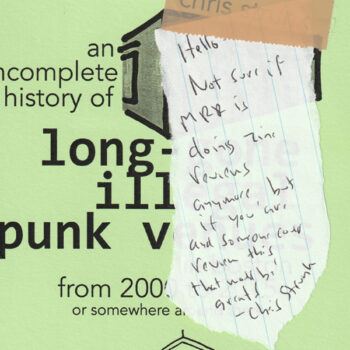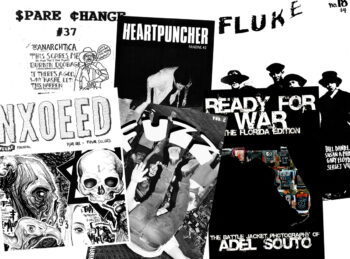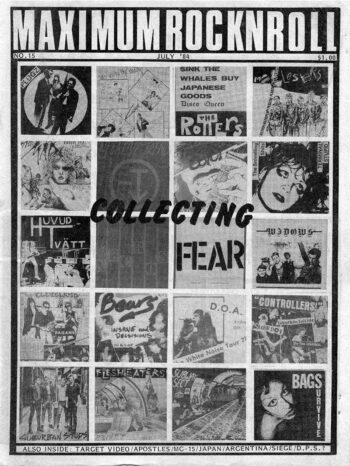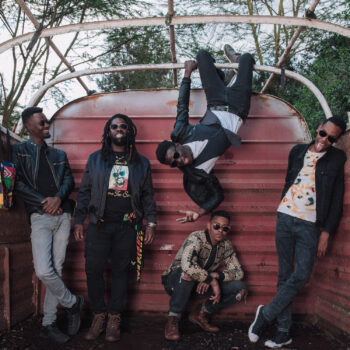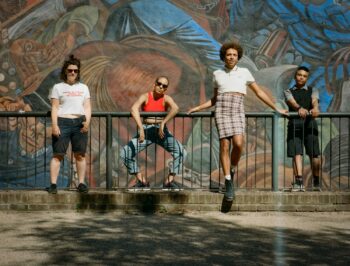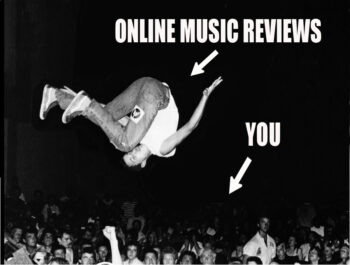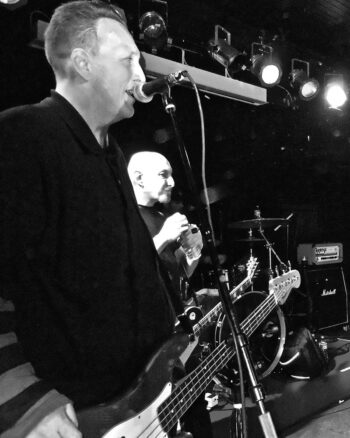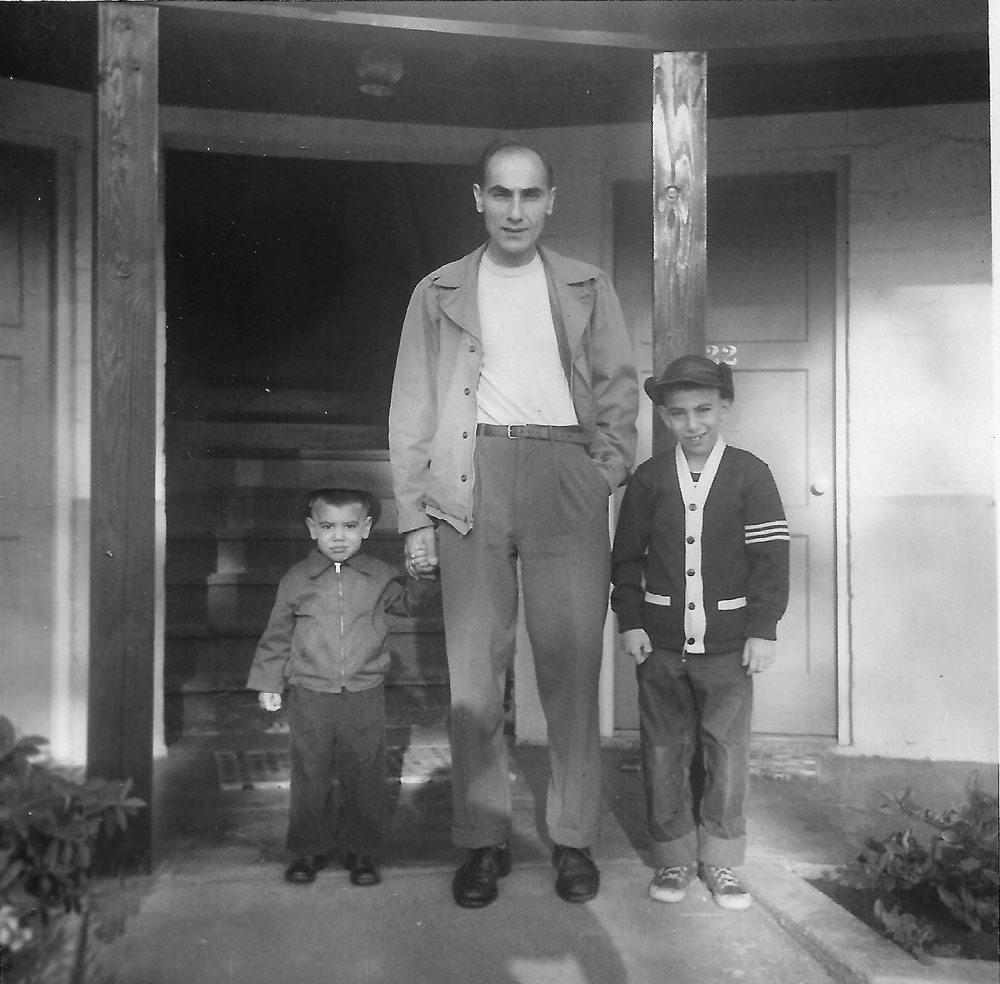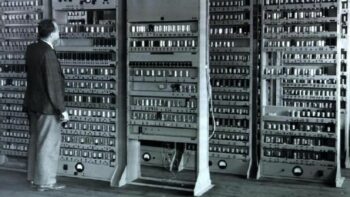Report: Four Dead After Tragedy at DOOM Show in Chile
Eyewitness account from Santiago, Chile
April 26, 2015
Please donate to help cover the funeral and medical bills resulting from this tragedy at this link or at tinyurl.com/helppunks

The Doom show on April 16 will mark a before-and-after point for the punk scene in Santiago. No one expected a customary rush on the door to result in four dead and over a dozen injured. Lots of people are grieving. There is a lot of blame-seeking. People are worried about the future of the scene. Although there have been many (often conflicting) accounts published in Spanish, only trickles of information have come out in English. As a gringo who doesn’t speak Spanish natively, I have tried my best to piece together an overview from other published accounts, conversations with trusted friends, and my own first-hand experience. The most important thing to take away is that there are STILL people in the hospital who need financial support. Please go to the following website to support the families of those who died and the people left with incredibly high medical bills: tinyurl.com/helppunks
Everyone knew the Doom show was going to be big. In the days leading up to the show, I had a lot of friends talking excitedly about it, while in the same breath complaining about the door price: 15,000 pesos (about $25 USD). Some very basic background about punk in Santiago: punk is BIG, most punks are poor, and they don’t like to pay a lot for shows. It’s pretty normal to see a crowd of punks haggling for a group price at the door. Lots of people I know were talking casually about showing up early and seeing if they could get in for free by means of avalancha. La avalancha — the avalanche — is a tactic utilized here to get into big shows without paying. People gather near the doors of a show, and at an opportune moment they rush the door, forcing their way past the bouncers and/or cops. All stadium-size punk festivals, of which there are a few every year, have avalanchas.

On the night of the show, I got to the club about an hour after door time. Nevertheless, there was a crowd of seventy, eighty, a hundred punks out on the sidewalk. Some had tickets and were just drinking with friends before the bands played. Some were waiting for the right opportunity to rush the door. Others were just waiting to see what would happen, eyeing the eight or so skinhead bouncers with uncertainty. At one moment, a group of about four cops passed through the crowd to talk with the bouncers. They didn’t get to talk for long though, because a steadily growing barrage of insults, bottles, and other projectiles started to rain down upon them. The cops took off and things calmed down, although every now and then someone would throw something towards the bouncers.
In the crowd, a punk tried to fight a metalhead who had just arrived. It looked like they had some prior beef. People pulled them apart, but when the metalhead went to turn in his ticket, the punk attacked him again. This was right in front of the bouncers, who were all taken off guard. At this moment the crowd rushed the doors and pushed the bouncers back. This was la avalancha.

The club is subterranean, and the entrance has a wide staircase that leads down to a landing. The bouncers retreated to the landing, and started to beat back the crowd with bats, pipes, and tasers. I couldn’t see the violence very well, but I could tell something was happening down below. The crowd at the front recoiled back, smothering and suffocating some of the people in the avalancha. I don’t know how long this went on for. It felt like a long time, maybe thirty minutes? But it could have been shorter and just felt long. Eventually, the desperation of the folks at the front got communicated to the rest of the crowd, who moved back and opened up a path for bodies to be carried up to the sidewalk.
When the crowd opened up, what I saw was horrible. There were over a dozen bodies, unconscious and injured, all over the landing. Lots of blood and lots of water. Friends I trust have told me that the bouncers were hosing people down with water and shocking them with tasers after they were soaked. People were trying to resuscitate the folks without pulses. One by one, most of the injured were carried up the stairs to the sidewalk. Some punks got into the middle of traffic and forced a city bus to stop. A number of the injured were loaded onto the bus and taken to the hospital, while some refused to move and just wanted to remain on the sidewalk.
At this point I decided to finally enter the club and look for the friend I had come with. Inside, lots of different stories were already circulating about what had happened on the street above: “Somebody died, man.”
“The cops came and they’re rioting up there.”
“It was weird, when I got here there was a bunch of shit on the stairs and I just walked in without having to pay. What happened?”
I found my friend, and she was thankfully safe, but I didn’t want to be there anymore. What I had seen was horrifying, so when some friends told me they were going to leave I decided to go with them. But on the staircase there were punks above, throwing bottles and boxes on fire down below, preventing anyone from leaving. The most plausible explanation I’ve heard is that they were friends of the people who were hurt, and were pissed that the show was going on despite what had taken place. During one of the opening bands a brave young woman took the stage to tell everyone what was happening outside, that people had died and that the show had to stop. The band kept playing, and somebody hit the bassist in the head with a bottle.

It was really hard to tell what was happening on the street above. At one moment I would hear that there was a brawl with the cops. At another moment people were saying it was fine to leave. Apparently at some point firefighters tried to enter the club but were fought off by punks. I decided to stay with my friend in the show until things definitely calmed down. Doom took the stage, and after a few songs the lights went up. Riot police descended into the club and amassed next to the stage. A voice on the PA told everyone to leave calmly to avoid any further incidents. The staircase had a stench of fire and there was lots of debris. Outside, a line of riot cops and a line of press awaited us, with the cop in charge telling us to move along calmly.
Three people died that night, and a fourth person died 36 hours later. Over a dozen arrived at the central hospital, although there were certainly more people injured than those who went to the hospital. The injuries are grave. Many of the injured lost their pulses at some point in the hospital, and one person lost a lung and has suffered severe brain damage. According to the doctors’ analyses, the causes of death include impacts to sensitive areas like the skull and thorax, compromising critical organs like the brain, lungs, and liver.
The dead are:
GastÁ³n Angladetti, 25 years old. GastÁ³n was an important part of the punk scene in Cordoba, Argentina as well as Santiago. He moved to Santiago from Argentina to be with his partner and raise their 5-year-old daughter together.
Daniel Moraga, 24 years old. Daniel was really active in the Santiago punk scene, most recently playing bass in the crustcore bands Gordo Bastardo and Restos de Vida.
FabiÁ¡n GonzÁ¡lez, 22 years old. FabiÁ¡n grew up in Iquique, but moved to Valparaiso a few years ago and got involved in the punk scene right away. The last band he was in was called Aberrante.
Ignacio Medina, 17 years old. Ignacio was a well-loved, straight-edge crusty in the scene. He played in a bunch of bands, most notably Na-Die.

SUPPORT
Words cannot describe how inspiring the punk scene’s initiative and solidarity has been. Just two days after, an olla comÁºn (community meal) was called for outside of the hospital where most of the injured were taken. The scene was somber—embraces; tears; waiting to be called in to see injured friends; small-scale fundraising to bring snacks and gifts inside. Banners with messages of support were hung on the fence around the hospital. The family of Ignacio Medina, who died earlier that afternoon, addressed the crowd, thanking us for showing up and caring about him.
A number of benefit shows were immediately organized, both in Santiago and in other countries throughout Latin America, North America, and Europe. Today was the first of the benefit shows to happen in Santiago. It was unforgettable and I feel privileged to be able to have been there. The bands played their hearts out, everyone sang along, and people who hadn’t seen each other since the Doom show finally got a chance to catch up and embrace each other. Beyond the money raised, it allowed us to speak to each other as a scene, and it reminded me of the spirit that keeps me coming back to this counterculture. Daniel’s and Ignacio’s fathers spoke, with Ignacio’s father wearing his son’s punk jacket. He spoke about his son’s love of music, and the injustices of this society that he was proud his son rebelled against—injustices he was sure we would continue to fight against too. GastÁ³n’s partner thanked us for being there, and expressed that especially since his death, through all the bureaucracy and red tape his family has had to deal with, she’s more convinced now than ever that this alienating system doesn’t serve our needs. It was the first time I cried since April 16. The absence of these friends was really apparent. The whole thing was heartbreaking, but uplifting too. Sort of like when the doctor breaks your bone a second time to set it to heal.

While the show was so much more than a benefit, I cannot overstate how much financial support is needed. Healthcare in Chile is very, very expensive and the seriousness of the injuries has left people with very high medical bills. In one especially heartbreaking case, it took GastÁ³n’s family over a week to assure that they could get him back to Argentina after he died because they simply didn’t have the money. Please, if you can, go to http://tinyurl.com/helppunks and give what you can. On that site you can also find a printable flyer describing what happened and how to help.
BLAME-SEEKING
The Doom show was already front-page news by the following day. The story in the papers was that the avalancha itself caused the injuries and deaths, by crushing people in the crowd and provoking an iron bar to collapse. This is a blatant lie. No part of the building collapsed. The blunt force trauma suffered that night was a result of the bouncers’ weapons, nothing else.
Facebook, blogs, and comment sections are full of arguments about who is to blame. The poles of the argument are, on one side, that the people trying to enter the show without paying are to blame for creating a deadly situation, and on the other side that the bouncers are the sole reason anyone ended up injured. During the olla comÁºn, one of the banners on the fence placed the blame fully on the bouncers. It’s already clear that this argument will be taking place within the scene for some time to come. Mixed in are other longstanding arguments about how the scene works: how much shows should cost, what to do about anti-social elements, as well as less-than-noble, classist gripes about streetpunks and crusties.
What is obvious to me is that the violence utilized by the bouncers only made matters worse. Aside from the direct violence they inflicted, once the crowd was amassed on the stairs, forcing the people at the front to move backwards only resulted in squeezing people unbearably close together. No one deserves to die over trying to see a band for free. Some would counter this by saying, “What were the bouncers supposed to do, let everyone enter for free and leave the promoter thousands of dollars in debt?” Well, currently the promoter is thousands of dollars in debt, under arrest, and there are 4 people dead. In any case, what happened that night cannot be undone. It may help some to speculate on how it could have been avoided, but the most important questions are about how the scene will evolve from this point forward.

THE FUTURE
Three days after Doom there was a large, stadium-size punk fest with the Adicts, Dead Kennedys (the fake one, without Jello), Ratos de PorÁ£o and more. Everyone I talked to anticipated a ton of cops who would be vigilant to break up any possible avalanchas. We also thought people might be too freaked out to try doing an avalancha. In fact, it was the opposite. A few avalanchas happened, and the cops and security told people they could just pass through because they didn’t want any trouble. I was pretty surprised that things worked out that way, just three days after the tragedy at Doom, but what remains clear is that the avalancha is here to stay.
What does this mean about how shows will work in the future? Will it be possible to safely and successfully book shows for larger-scale DIY bands like Doom or Crudos? Are there ways to pay the way for bands without relying on violence at the door? How can we build a scene without alienated relationships where the promoters, bouncers, and crowd are separated from each other? Lots of conversation has been happening about how the scene will evolve from this point forward.
In a capitalist society, any large investment implies an element of force—without loss prevention, what’s to stop us from just shopping for free? Without the sheriff, what’s to stop us from simply not paying our rent? It would be foolish for us to think that just because we are punks this kind of capitalist logic, and its accompanying violence, wouldn’t end up playing out in our scene, especially in larger, more commercial shows.
The solution is not better security or more fortified spaces—at least not for the question I’m asking, which is how to keep punk a meaningful, vibrant, nurturing space. Better security might technically solve the problem of safety, but it would rob people of the sense of ownership and shared responsibility they have for their scene—and would inevitably drive up costs anyway. There’s an objective condition: punks are poor. Then there are subjective conditions: punks are creative, scrappy, don’t take shit, and look out for each other. Together, these conditions will continue to generate conflict in punk spaces that are expensive and exclusive. To me, the best way forward is suggested in a flyer circulated at the olla comÁºn last Saturday, titled “Viva el Punk.” It reads:
The question isn’t whether there should or shouldn’t be avalanchas… the problem is that until now we haven’t been capable of creating self-determined spaces to share in punk and a DIY approach to life.
…
The seductive comfort of commercial spaces, in which everything gets resolved by consumer dynamics, has disastrous results.
…
We need to make punk once again a space of our own making, based in camaraderie, free of alienation and callousness.
Despite everything, punk’s not dead in Chile. As Ignacio’s father said today, the memory of those who died is carried by everyone here in the scene: in our patches, in the music we listen to, in the attitude we carry against all the bullshit in this society. Punks here are already reinventing their scene and reaffirming their search for a way out of this world of alienation and heartlessness.
Please do what you can to support them by donating to the fund for those still in the hospital and by keeping the memory of those who died alive. And please, please be careful with each other so we can continue to be dangerous together.
Viva el punk,
A gringo punk in Chile
Donate to help cover medical costs: tinyurl.com/helppunks
Get in touch for more info: SolidarityPunks@gmail.com
APPENDIX:
Doom’s statement about the deaths at their show can be found on their Facebook page: www.facebook.com/doomcrustpunk
An interview with Ignacio Medina:
Roughly translated full text of “Viva el Punk”:

VIVA EL PUNK
I can’t accept that the judgment, the divisions, the hate and violence has taken control of our hearts, destroying our rebellion, our attitude, out friendship, our dreams, our love.
These words are born from the restlessness provoked in us by what happened on the night of April 16, since we can’t remain silent, and we take this critical position facing us as punks.
The question isn’t whether there should or shouldn’t be avalanchas… the problem is that until now we haven’t been capable of creating self-determined spaces to share in punk and a DIY approach to life.
We can’t lie and let ourselves think that the people who are “oogles,” who “don’t want to pay for anything,” are the ones responsible for this historia triste (sad story).
The seductive comfort of commercial spaces, in which everything gets resolved by consumer dynamics, has disastrous results. Don’t we want to enjoy being in bands, seeing bands that our friends play in?
Limiting ourselves to just buying a ticket and consuming a concert, what does this say about ourselves? That punk is something you can simply buy in a retail store? If this is the case, then there isn’t any sense left in punk.
Enough with judicial-style denunciations. What we need in this moment is healing, reflection, love, and self-organization.
We need to make punk once again a space of our own making, based in camaraderie, free of alienation and callousness.
Punk isn’t just an alternative to the disco, something to kill the emptiness of our “free time” that modern life affords us.
Punk is protest, punk is counterculture, an everyday negation of the way of life that this world forces upon us.
We want to send out a loving gesture to all those suffering in this difficult moment, and to those who are connecting through these feelings.
With love,
Some punks.
Santiago, 2015

